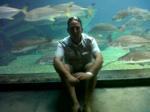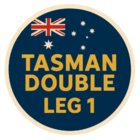Login
Support Sailonline
If you haven't already - join the SAILONLINE YACHT CLUB!
Please also consider making a donation - all amounts are greatly appreciated!
|
Posted by ita10267  |
|
|
We are proudly introducing the WRF Model as a new source of weather forecast data (GRIBs). WRF is recognized throughout the scientific community as the most accurate and reliable weather forecast model. An extensive (and technical) description of WRF can be found at:
http://www2.mmm.ucar.edu/wrf/users/model.html The scope of this post, without entering into too much technical details, is to inform the SOL community about the features that this model can introduce and how we can benefit from it. In SOL we historically use the GFS weather model. According to its definition the GFS model is basically one “of the predominant synoptic scale medium-range models” in general use. Therefore it is good (within its accuracy which is around 30km with the resolution we are currently using) if wind is dictated by pressure/temperature fields. This means that, in shorter races, we rely on a small number of grid points and, in between them, we use interpolation. The result is a smooth wind field that is hardly able to follow coastlines. Of course we miss all the finer features that come within this scale, like funnelling, day/night breeze, swirls etc. We therefore decided to propose a trial of the WRF model, which is a local weather forecast that takes into account a number of small scale (accuracy in the 10m range can be reached) factors neglected in the GFS model. This is not an exhaustive list but a few of these factors are: - Landmass elevation profile - Urbanization - green fraction - soil composition (as sand heats differently from clay, concrete etc etc) - ground heating - sea heating So, many new local effects can be visible by SOL users. Of course, for those who are not aware about basic meteorology, there will be no difference in sailing with the old GFS model compared to the new one other than a more “realistic” feeling and less smoothed appearance of the wind field. The experienced sailor, on the other hand, will recognize the patterns he is usually able to see IRL. So, overall, we believe that the realism of SOL can be improved and increased by the new wx source. We have decided to test drive the new model on a classic run between Boston and Newport. For this purpose a 0.05deg spaced grid will be used. This is 10X more accurate than the most accurate GFS grid we have ever used. As a drawback, given the additional computational time and with the purpose of keeping update times consistent with the GFS model, a shorter maximum time window of only 2.5 days is available for the weather forecast as seen when moving the slider at the bottom of the client. Please take your time to explore the new wind data and post your feedback here in this thread. |
|
|
Posted by bonknhoot  |
|
|
brilliant! like!! Clipping along |
|
|
Posted by JB  |
|
|
Viva Andrea.
Absolutely fabulous! Sail Fair. |
|
|
Posted by Vince Nel (WW)  |
|
|
Smart stuff. Nice. Thanks Andrea I like to talk a lot... sometimes I even make sense, mostly not... |
|
|
Posted by RainbowChaser |
|
|
And here's a quick pic to show you what the difference(s) are and.. how to set them - this pic shows how to chance the arrows, but with this new model the contour-settings will also be worth playing with:
 --- Last Edited by RainbowChaser at 2015-02-09 18:44:13 --- |
|
|
Posted by A2  |
|
|
Typically with Our normal resolution Wx grids are organized by every half degree of Lon/Lat & High Def by every quarter degree.
With this new model, which sounds even better, will the Wx Grid quadrants be even smaller as well ? None so blind |
|
|
Posted by hmm |
|
|
The Boston-Newport HI-RES test uses 0.05 degree grid. We of course need finer resolution for showing the detail.
|
|
|
Posted by A2  |
|
|
Well if we can resolve the new model so that our translation displays quadrant boundaries per every 1/8th degree then that would be most welcome.
Also: My understanding is that the NOAA Wx is extrapolated from a 3 hour time frame. So what is the time resolution of the new model prior to our adaptation ? --- Last Edited by A2 at 2015-02-09 23:12:24 --- None so blind |
|
|
Posted by ita10267  |
|
|
We have also higher time resolution with WRF. GRIB frames are spaced 1hr instead of 3hrs. This can help with faster gradients.
@A2: I don't really get your point regarding quadrants. Can you explain? --- Last Edited by ita10267 at 2015-02-10 07:41:17 --- |
|
|
Posted by A2  |
|
|
I really do appreciate this opportunity to have these types of discussions.
First let me explain that I have little if any real sailing experience and lack the usual vocabulary that would seem natural to those that do. Also I do not employ any routing software to analyze in greater detail weather data as a whole. Let me be clear and state here & now that I have no complaint for those that incorporate such methods as that was the original purpose for the inception of this virtual sailing venue. So over the time I have spent here using just the information available in the browser client and the process of careful observation along with my attempt to visualize how to plan my navigational strategy I have identified rectangular areas that I call "quadrants" bounded by, most often, half degrees of lon/lat depending on the Wx resolution. These boundaries are where the isotachs have their pointy edges and if you follow either a 270-90 horizontal or 360-180 vertical line that the wind speed will exhibit its maximal or minimal transitions. --- Last Edited by A2 at 2015-02-10 14:40:31 --- None so blind |
Races
Next Race: 00d 00h 00m
Current Races:
Cape Town to Rio 2026

Welcome to South Africa and RCYC's classic transatlantic Cape2Rio Race from Cape Town, South Africa, to Rio de Janeiro, Brazil. First run in 1971, this run is buddied with the IRL, Cape2Rio 2025 arranged by the Royal Cape Yacht Club with the cooperation of the
Iate Clube do Rio de Janeiro Despite this being announced the 2025 race (starting dec. 27) it is the 2026 SOL championship kickoff. This virtual version, will be raced once again in Mark Mills' 74ft speedster, the stunning C2R74.
Race #1996 INFO
by brainaid.de
C2R74 PARTICULARS
WX Updates:
0430 / 1030 / 1630 / 2230
Ranking:
OCQ1 - OCCH - SUPBUD - SYC
Race starts: Dec 27th 12:00
Registration Open!
ORCV Melbourne to Hobart 2025

Race #1952
INFO by brainaid.de
Dehler 46 PARTICULARS
WX Updates:
0430 / 1030 / 1630 / 2230
Ranking: SYC
Race starts: Dec 27th 02:30 Registration will open soon
GO TO RACE
Tasman Double 2025 - Sydney to Hobart

Race #1953
INFO by brainaid.de
Super Maxi 100v2 PARTICULARS
WX Updates:
0430 / 1030 / 1630 / 2230
Ranking: TD - SYC
Race starts: Dec 26th 02:00 Registration Open!
GO TO RACE
Valletta Sprint 2025
We invite you once again to this SOL classic around the Middle Sea, departing from and returning to historic Valletta. Loseley modelled on an IRL classic often sponsored by a luxury wristwatch purveyor, our c 600nm course takes us north as far as Stromboli, then west of Sicily and south to Lampedusa and back to Valletta probably via the strait between Malta and Gozo. This year we will race it all in very Meddy Dufour 40’s!
Race #1949
INFO by brainaid.de
Dufour 40 PARTICULARS
WX Updates:
0430 / 1030 / 1630 / 2230
Ranking: SYC
Race starts: Dec 20th 11:00 Registration Open!
GO TO RACE
Chatham Island TIMED Chase 2025

Race #1990
INFOby brainaid.de
Farr 38 Particulars
WX Updates:
0430 / 1030 / 1630 / 2230
Ranking:
TRQ4 - TRCH - SUPSOL - SYC
RACE CLOSE: Saturday,
27 December at 23:00 UTC
Race starts: Dec 14th 12:00 Registration Open!
GO TO RACE
Christmas to Christmas Island 2025

PRIZE: SMPF
Race #1967
INFO by brainaid.de
Maxi Trimaran PARTICULARS
WX Updates:
0430 / 1030 / 1630 / 2230
Ranking: OCQ4 - OCCH - SUPSOL - SYC
RACE CLOSE: Wednesday,
December 24 at 2300 UTC.
Race starts: Dec 01st 11:00 Registration Closed
GO TO RACE
SYC Ranking
Series
- SYC ranking
- 2026 TSI
- 2026 TRQ4
- 2026 TRQ3
- 2026 TRQ2
- 2026 TRQ1
- 2026 TRCH
- 2026 TQD
- 2026 SUPerBUDdy
- 2026 SSANZ
- 2026 SPQ4
- 2026 SPQ3
- 2026 SPQ2
- 2026 SPQ1
- 2026 SPCH
- 2026 SHE
- 2026 ROW
- 2026 RNW
- 2026 RNI
- 2026 RMI
- 2026 RED
- 2026 OCQ4
- 2026 OCQ3
- 2026 OCQ2
- 2026 OCQ1
- 2026 OCCH
- 2026 NIA
- 2026 MIG
- 2026 MED
- 2026 LOOR
- 2026 CCZ
- 2026 BOL
- 2026 B2B
- 2025 TS
- 2025 TRQ4
- 2025 TRQ3
- 2025 TRQ2
- 2025 TRQ1
- 2025 TRCH
- 2025 TD
- 2025 SuperSOLer
- 2025 SSANZ
- 2025 SPRCH
- 2025 SPQ4
- 2025 SPQ3
- 2025 SPQ2
- 2025 SPQ1
- 2025 SHE
- 2025 SBB
- 2025 RWW
- 2025 RMI
- 2025 RED
- 2025 OCQ4
- 2025 OCQ3
- 2025 OCQ2
- 2025 OCQ1
- 2025 OCCH
- 2025 NT
- 2025 LOOR
- 2025 DN
- 2025 B2B
- 2025 ARQ4
- 2025 ARQ3
- 2025 ARQ2
- 2025 ARQ1
- 2025 ARCH
- 2025 ABS
- 2024 TS
- 2024 TRQ4
- 2024 TRQ3
- 2024 TRQ2
- 2024 TRQ1
- 2024 TRCH
- 2024 TD
- 2024 SVF
- 2024 SUPerSOLer
- 2024 SSANZ
- 2024 SPRQ4
- 2024 SPRQ3
- 2024 SPRQ2
- 2024 SPRQ1
- 2024 SPRCH
- 2024 SHE
- 2024 RTW
- 2024 RMS
- 2024 OCQ4
- 2024 OCQ3
- 2024 OCQ2
- 2024 OCQ1
- 2024 OCCH
- 2024 LOOR
- 2024 HILAT
- 2024 GWT
- 2024 DN
- 2024 CRW
- 2024 B2B
- 2024 ARQ4
- 2024 ARQ3
- 2024 ARQ2
- 2024 ARQ1
- 2024 ARCH
- 2023 TS
- 2023 TRQ4
- 2023 TRQ3
- 2023 TRQ2
- 2023 TRQ1
- 2023 TRCH
- 2023 TD
- 2023 SVS
- 2023 SUPerSOLer
- 2023 SSANZ
- 2023 SPRQ4
- 2023 SPRQ3
- 2023 SPRQ2
- 2023 SPRQ1
- 2023 SPRCH
- 2023 SHE
- 2023 RTW
- 2023 RNI
- 2023 RMS
- 2023 PIC
- 2023 OCQ4
- 2023 OCQ3
- 2023 OCQ2
- 2023 OCQ1
- 2023 OCCH
- 2023 LOOR
- 2023 DN
- 2023 ARQ4
- 2023 ARQ3
- 2023 ARQ2
- 2023 ARQ1
- 2023 ARCH
- 2022 TRQ4
- 2022 TRQ3
- 2022 TRQ2
- 2022 TRQ1
- 2022 TRCH
- 2022 TD
- 2022 Tall Ships
- 2022 SUPerSOLer
- 2022 SSANZ
- 2022 SSA
- 2022 SPRQ4
- 2022 SPRQ3
- 2022 SPRQ2
- 2022 SPRQ1
- 2022 SPRCH
- 2022 SHE
- 2022 OCQ4
- 2022 OCQ3
- 2022 OCQ2
- 2022 OCQ1
- 2022 OCCH
- 2022 NTR
- 2022 LOOR
- 2022 CTR
- 2022 ARQ4
- 2022 ARQ3
- 2022 ARQ2
- 2022 ARQ1
- 2022 ARCH
- 2021 TRQ4
- 2021 TRQ3
- 2021 TRQ2
- 2021 TRQ1
- 2021 TRCH
- 2021 TD
- 2021 Tall Ships
- 2021 SYCQ4
- 2021 SYCQ3
- 2021 SYCQ2
- 2021 SYCQ1
- 2021 SYCCH
- 2021 SUPerSOLer
- 2021 SSANZ
- 2021 SPRQ4
- 2021 SPRQ3
- 2021 SPRQ2
- 2021 SPRQ1
- 2021 SPRCH
- 2021 Shetland
- 2021 PAC6
- 2021 OCQ4
- 2021 OCQ3
- 2021 OCQ2
- 2021 OCQ1
- 2021 OCCH
- 2021 ESRW
- 2020 TSE
- 2020 TSA
- 2020 TRQ4
- 2020 TRQ4
- 2020 TRQ3
- 2020 TRQ2
- 2020 TRQ1
- 2020 TRCH
- 2020 Tasman Double
- 2020 SYCQ4
- 2020 SYCQ3
- 2020 SYCQ2
- 2020 SYCQ1
- 2020 SYCCH
- 2020 SUPerSOLer
- 2020 SSANZ
- 2020 SRQ4
- 2020 SRQ3
- 2020 SRQ2
- 2020 SRQ1
- 2020 SPRCH
- 2020 Shetland
- 2020 RTW
- 2020 RNI
- 2020 Odyssey
- 2020 OCQ4
- 2020 OCQ3
- 2020 OCQ2
- 2020 OCQ1
- 2020 OCCH
- 2020 A3
- 2019 TRQ4
- 2019 TRQ3
- 2019 TRQ2
- 2019 TRQ1
- 2019 TRCH
- 2019 Tasman Double
- 2019 Tall Ships
- 2019 SYCQ4
- 2019 SYCQ3
- 2019 SYCQ2
- 2019 SYCQ1
- 2019 SYCCH
- 2019 SUPerSOLer
- 2019 SSANZ
- 2019 SRQ4
- 2019 SRQ3
- 2019 SRQ2
- 2019 SRQ1
- 2019 SPRCH
- 2019 Shetland
- 2019 Round New Zealand
- 2019 OCQ4
- 2019 OCQ3
- 2019 OCQ2
- 2019 OCQ1
- 2019 OCCH
- 2018 TRQ4
- 2018 TRQ3
- 2018 TRQ2
- 2018 TRQ1
- 2018 TRCH
- 2018 Tasman Double
- 2018 Tall Ships
- 2018 SUPSOL
- 2018 SSANZ Triple
- 2018 SRQ4
- 2018 SRQ3
- 2018 SRQ2
- 2018 SRQ1
- 2018 SPRCH
- 2018 Shetland
- 2018 Shackleton Challenge
- 2018 OCQ4
- 2018 OCQ3
- 2018 OCQ2
- 2018 OCQ1
- 2018 OCCH
- 2018 40CH
- 2017 TS RDV
- 2017 TRQ4
- 2017 TRQ3
- 2017 TRQ2
- 2017 TRQ1
- 2017 TRCH
- 2017 Tasman Double
- 2017 Tall Ships
- 2017 SWR
- 2017 SUPSOL
- 2017 SSANZ Triple
- 2017 SSANZ RNI
- 2017 SPRR3
- 2017 SPRR2
- 2017 SPRR1
- 2017 SPRCH
- 2017 Red Dot
- 2017 OCQ4
- 2017 OCQ3
- 2017 OCQ2
- 2017 OCQ1
- 2017 OCCH
- 2017 40CQ3&4
- 2017 40CQ1&2
- 2016 TRQ4
- 2016 TRQ3
- 2016 TRQ2
- 2016 TRQ1
- 2016 TRCH
- 2016 Tasman Double
- 2016 Tall Ships
- 2016 SUPSOL
- 2016 SSANZ Triple
- 2016 SRQ4
- 2016 SRQ3
- 2016 SRQ2
- 2016 SRQ1
- 2016 SPRCH
- 2016 RTWR
- 2016 OCQ4
- 2016 OCQ3
- 2016 OCQ2
- 2016 OCQ1
- 2016 OCCH
- 2016 Corporate Open Gold
- 2016 A3
- 2015 TRQ4
- 2015 TRQ3
- 2015 TRQ2
- 2015 TRQ1
- 2015 TRCH
- 2015 Tasman Double
- 2015 Tall Ships
- 2015 SYQ4
- 2015 SYQ3
- 2015 SYQ2
- 2015 SYQ1
- 2015 SYCCH
- 2015 SUPSOL
- 2015 SSANZ Triple
- 2015 SRQ4
- 2015 SRQ3
- 2015 SRQ2
- 2015 SRQ1
- 2015 SPRCH
- 2015 OCQ4
- 2015 OCQ3
- 2015 OCQ2
- 2015 OCQ1
- 2015 OCCH
- 2015 Aegean Rally
- 2014 Timed Races Championship
- 2014 Tasman Double
- 2014 Tall Ships
- 2014 SYC Championship
- 2014 SSANZ Trio
- 2014 SSANZ RNI
- 2014 Sprints Championship
- 2014 Scandinavian Tour
- 2014 Round The World Race
- 2014 Ocean Championship
- 2014-2015 Sailonline World Race
- 2013 Tall Ships
- 2013 SYC Championship
- 2013 SSANZ B&G Simrad
- 2013 Capt Anderson
- 2012 W Australia Regatta
- 2012 Tall Ships
- 2012 SSANZ B&G Simrad
- 2012 RNZ Two Handed
- 2012 Global Challenge
- 2012 Ecker Cup
- 2012 Black Sea
- 2012 A3
- 2011 Vancouver Island
- 2011 Tasman Double
- 2011 SSANZ B&G Simrad
- 2011 SOL Global Challenge
- 2011 SJORA Series
- 2011 Scandinavian Tour
- 2011 Round North Island
- 2011 Asian Sprints
- 2011-2012 SOL World Race
- 2010 Tasman Double
- 2010 Ouzo Rally
- 2010 Iberian Tour
- 2010 Auckland Regional
- 2009 French SOLo
- 2009 Bosphore - Bretagne
- 2008 SYCC
- 2008 -2013 SYC Week Race Championship
- 2008 -2013 SYC Week-End Race Championship
- 2008 -2013 SYC Ocean Race Championship
- 2008-2009 Sailonline Ocean Race
- 2004 LOOR
Mobile Client
SYC members have the benefit of access to our mobile/lightweight web client!

